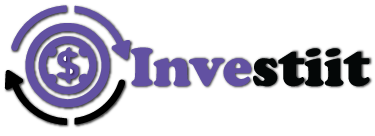The world of organizational structures and operational models is constantly evolving, and terms like “crew disquantified org” are emerging as key phrases in understanding these changes. In this article, we will explore the meaning of the term “crew disquantified org,” its significance in modern organizational structures, its implications for team dynamics, and how businesses are adapting to this new trend. By the end of the article, you will have a clearer understanding of the relevance and potential of the concept of “crew disquantified org.”
What is a Crew Disquantified Org?
The term “crew disquantified org” can be broken down into two parts: “crew” and “disquantified org.” While the word “crew” typically refers to a group of people working together toward a shared goal, “disquantified” suggests the removal of traditional quantifiable structures within the organization. Thus, a “crew disquantified org” refers to an organization that breaks away from conventional, quantifiable methods of measuring success, performance, or teamwork.
Understanding “Disquantified” in Organizational Context
The word “disquantified” may be unfamiliar to many, but in the context of organizational theory, it signifies the move away from traditional ways of measuring productivity, output, or efficiency based on quantifiable metrics. In a typical organization, there are clear numerical goals, KPIs (Key Performance Indicators), and measurable outcomes that determine success. However, a “disquantified” organization does not rely solely on these metrics. Instead, it focuses on qualitative aspects like creativity, collaboration, and employee well-being, which are harder to measure.
The Rise of Crew Disquantified Orgs
In recent years, the traditional approach to organizational management, where everything is measured by numbers and performance metrics, has come under scrutiny. This shift can be attributed to several factors:
1. Emphasis on Employee Well-Being
Many businesses are realizing that employee satisfaction, creativity, and work-life balance contribute significantly to long-term productivity. Rather than focusing solely on hours worked or tasks completed, companies are paying more attention to the overall well-being of their employees. This has led to the creation of flexible work environments, non-hierarchical structures, and an overall emphasis on fostering a positive culture.
2. The Knowledge Economy
In today’s knowledge economy, intellectual capital is more valuable than physical output. Companies in sectors like tech, media, and consulting are embracing this shift by encouraging innovation, collaboration, and knowledge sharing. In a crew disquantified org, employees work as a team to generate creative solutions, without being constrained by rigid rules and metrics.

3. Technological Advancements
Technology has played a pivotal role in shaping how organizations function. With the advent of artificial intelligence, machine learning, and other advanced technologies, many tasks that were once quantifiable can now be handled automatically. As a result, companies can focus more on human creativity and collaboration, rather than relying on traditional performance measurements.
Core Characteristics of a Crew Disquantified Org
A crew disquantified org is not just about removing traditional metrics, it also introduces new dynamics and ways of thinking. Here are some core characteristics that define this type of organization:
1. Fluid Team Structures
In a crew disquantified org, the traditional idea of fixed, hierarchical teams is often replaced with fluid, self-organizing groups. These teams may change frequently depending on the nature of the task at hand, promoting flexibility and adaptability. This approach allows organizations to respond quickly to new challenges and opportunities, rather than being bogged down by rigid team structures.
2. Focus on Collaboration Over Competition
Rather than fostering a competitive environment, where individuals or teams are pitted against one another based on performance metrics, a crew disquantified org emphasizes collaboration. By focusing on collective goals and shared success, these organizations build stronger bonds between employees and encourage innovative solutions that might not emerge in a competitive, metrics-driven environment.
3. Empowerment and Autonomy
One of the key features of a crew disquantified org is the autonomy granted to employees. Instead of micromanaging or forcing individuals to adhere to rigid workflows, these organizations empower their teams to make decisions, set their own priorities, and take ownership of their projects. This approach leads to increased job satisfaction and can foster a culture of trust and accountability.
4. Emphasis on Qualitative Metrics
While traditional organizations rely heavily on quantitative data to assess performance, a crew disquantified org looks at qualitative factors such as employee engagement, creativity, and collaboration. This shift in focus allows for a more holistic view of an employee’s contribution to the organization and helps create a more inclusive and sustainable work environment.
5. Integration of Technology for Better Collaboration
Rather than relying on traditional project management tools that emphasize task completion and deadlines, a crew disquantified org may use technology to foster communication, creativity, and collaboration. For example, tools like Slack, Microsoft Teams, or Asana are used not just to track progress, but to enhance team interactions, share knowledge, and encourage the flow of ideas.
How Crew Disquantified Orgs Impact Leadership
In a crew disquantified org, leadership does not follow the traditional top-down model where managers give orders and expect compliance. Instead, leadership in such organizations tends to be more democratic and decentralized, with leaders acting as facilitators rather than decision-makers. This shift requires a change in leadership philosophy:
1. Facilitating Collaboration
Leaders in a crew disquantified org are responsible for creating an environment where collaboration can thrive. Rather than enforcing deadlines or dictating processes, they ensure that the team has the tools and support needed to perform at its best. This may involve providing coaching, fostering creativity, and resolving any interpersonal conflicts that arise within the team.
2. Leading by Example
In this type of organization, leaders are expected to embody the values of trust, transparency, and open communication. By setting an example, leaders inspire employees to follow suit. The role of leadership is less about giving orders and more about creating a culture of trust and empowerment.
3. Focus on Development
Leaders in a crew disquantified org place a significant emphasis on the professional and personal development of employees. With a focus on qualitative factors, such as creativity and collaboration, leaders strive to build skills in these areas, ensuring employees continue to grow and contribute to the organization in meaningful ways.
Real-World Examples of Crew Disquantified Orgs
Several organizations have embraced the principles of a crew disquantified org. Some of the most well-known examples include:
1. Google
Google has long been known for its innovative approach to workplace culture. The company emphasizes flexibility, autonomy, and collaboration, creating an environment that encourages creativity and problem-solving. Google’s use of flexible teams, non-hierarchical structures, and emphasis on qualitative outcomes has made it a pioneer in the disquantified organization model.
2. Zappos
Zappos, an online retailer, is another company that has embraced a more flexible and fluid approach to management. Their focus on employee engagement and creating a strong company culture aligns with the idea of a crew disquantified org. Zappos fosters collaboration, values autonomy, and uses qualitative feedback to assess employee performance.
3. Valve
Valve, a video game developer, operates with a unique organizational structure. Employees at Valve work in self-organizing teams that change depending on the project at hand. The company fosters a creative, collaborative environment where traditional performance metrics are not as important as innovation and contribution to the team.
Challenges of Implementing a Crew Disquantified Org
While the idea of a crew disquantified org sounds appealing, it is not without its challenges. Implementing such an organizational structure requires a shift in mindset from both leaders and employees. Some challenges include:
- Resistance to Change: Employees and managers accustomed to traditional metrics-based structures may be resistant to change.
- Lack of Clear Performance Metrics: Without clear metrics, it can be difficult to evaluate success or performance consistently.
- Balancing Autonomy with Accountability: Giving employees autonomy is essential, but it can be difficult to maintain accountability without clear performance indicators.
Conclusion
The concept of a “crew disquantified org” represents a significant shift in how modern businesses are structured and how they measure success. By moving away from rigid, quantifiable metrics and embracing collaboration, empowerment, and creativity, organizations are positioning themselves for greater innovation and long-term success. While there are challenges to implementing this model, the benefits are clear: increased employee satisfaction, stronger team dynamics, and the potential for more meaningful and sustainable growth. As the workplace continues to evolve, the crew disquantified org may very well become the new standard for forward-thinking companies.




